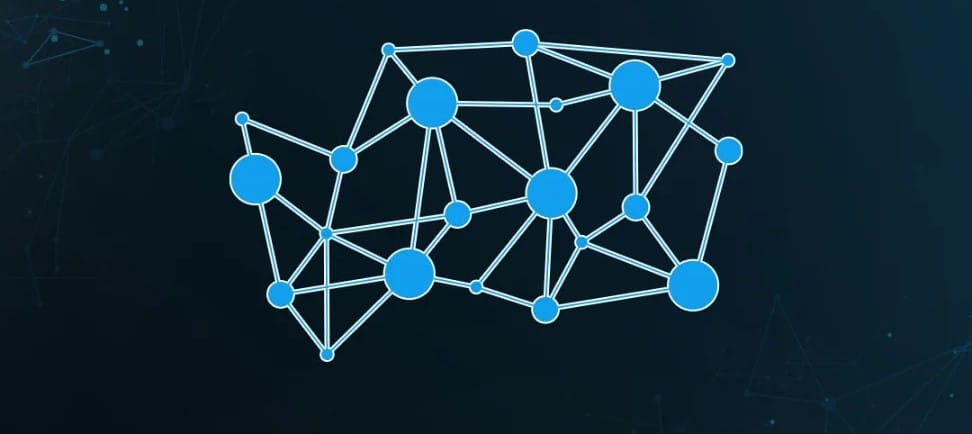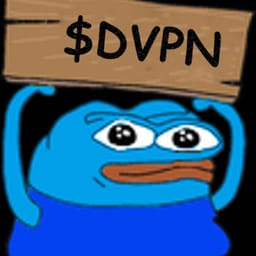The Future of Data Consumption and dVPNs in Europe

Europe has witnessed tremendous growth in data consumption over telecom networks in recent years, a trend that is set to continue over the next decade. Average monthly household mobile data usage per user increased from 5GB in 2018 to 15GB in 2022 - representing 25% annual growth. Meanwhile, average monthly household fixed network data consumption rose from 132GB to 225GB over the same period.
The question is: what's driving this insatiable demand for data?
Demand Drivers: Video, Social Media and Emerging Tech
The main use cases dominating growth are video streaming, social networking, gaming and e-commerce. Video alone accounts for 60-65% of total current data demand in Europe. Average time watching videos has plateaued at 3-4 hours daily on mobile devices and 6-10 hours on fixed networks.

However, video and social media apps are rapidly increasing their data intensity as platforms shift to higher resolutions, richer formats and live streaming. The rollout and adoption of emerging technologies like augmented reality (AR), virtual reality (VR) and metaverse applications also contributes to rising data intensity per digital activity or engagement session.
As an example, average video is forecast to shift from current mainstream high definition (HD) resolution requiring 1-3GB per hour to predominant 4K quality needing 8-10GB hourly by 2030. Social media is moving beyond text and images to bandwidth-hungry short video formats. Down the road, metaverse interactions could involve multiple streams of high definition content simultaneously.
Supply Developments: Networks Racing to Keep Pace
Fibre and 5G networks support growing consumption, especially in countries with high coverage. Fiber to the home (FTTP) and 5G penetration shows strong correlation with higher mobile and fixed data usage compared to legacy infrastructures. Early 5G adopters demonstrate 1.2-1.3x higher data usage than average 4G users.
Meanwhile, markets where large 20GB+ mobile data packages are relatively inexpensive compared to average revenue per user (ARPU) tend to see higher mobile data consumption compared to countries where such plans remain expensive. Fixed wireless access (FWA) and improving smartphone capabilities round out key developments on the supply side.
The Outlook for 2030: Expect Exponential Growth
Given the trends outlined above, average European mobile data consumption per user is forecast to rise from 15GB today to 75-80GB by 2030 - representing 25% annual growth. Average fixed network traffic per household is estimated to increase from 225GB to 900GB over the same period, reflecting 20% annual growth.
Leading countries by 2030 include Spain, Portugal, Latvia and Lithuania, which benefit from extensive fiber infrastructure rollout. Markets with early 5G adoption like Finland and Austria are also expected to maintain higher than average mobile data usage thanks to their head start.
Potential for Even Faster Growth
The forecasts assume gradual evolution of existing demand drivers and supply-side enablers. More aggressive assumptions are possible around new use cases, and technological step changes can accelerate traffic growth even faster.
As one extreme scenario, a hypothetical household streaming 12 hours of 4K video content daily would generate 3,600 GB of monthly fixed traffic - four times our projected 2030 average. While unlikely in reality due to bandwidth constraints and consumer behavior, it illustrates the exponential data growth potential if user habits shift towards full-time immersion in data-intensive digital activities through advanced devices and connectivity.
European data consumption growth is expected to continue at strong double-digit rates over the next decade fueled by surging demand for data-rich entertainment, social networking and emerging technology experiences. Keeping pace with this data boom will require aggressive, anticipatory infrastructure investment by telecom operators and tech players. Companies that successfully ride this wave stand to reap huge opportunities as digital immersion rises across every facet of society.
The Role of Decentralized VPNs
The exponential data growth projected across European mobile and fixed networks presents a monumental capacity challenge. Traditional centralized virtual private network (VPN) architectures will struggle to scale to meet this surge in bandwidth demand. However, emergent decentralized VPN (dVPN) approaches offer a promising alternative.
By distributing routing, encryption and other network functions across nodes in a peer-to-peer mesh topology, dVPNs avoid the throughput bottlenecks and single point of failure risks inherent in conventional VPNs. This allows them to handle massive traffic levels without degradation in performance.
Early dVPN implementations demonstrate ability to achieve speeds up to 10 Gbps across international connections using just commodity servers. In contrast, the largest centralized VPN providers max out at 1-2 Gbps typically. This enormous throughput advantage makes dVPN uniquely suited to cope with Europe's pending data tsunami.
Beyond higher bandwidth, dVPNs also provide stronger security guarantees since there is no central server to compromise. Encryption keys are split across nodes in a cryptographic technique called secret sharing. Taking down the network requires simultaneously attacking a majority of nodes - an almost impossible task.
As dVPNs scale node membership to hundreds or thousands of locations, they gain diversity to absorb regional network failures and malicious attacks. The mesh topology provides inbuilt resiliency absent in centralized VPNs. Solution uptime can thus be delivered at five nines (99.999%) availability and beyond.
Use Cases Primed for DVPN Growth
Numerous consumer and enterprise use cases stand ready to adopt dVPN given its scalability, security and resilience strengths. These span applications like:
- HD Video Streaming - dVPN mesh can handle multiple 4K/8K streams to endpoint devices as ultra high definition video goes mainstream
- Multiplayer Gaming - dedicated high throughput tunnels prevent lag for competitive online gaming sessions
- IoT/IIoT Networks - interconnect massive sensor deployments while protecting integrity of data flows
- Remote Work Access - securely connect remote employees to office resources from any location
- Business Critical Apps - ensure reliability for transactions, video collaboration apps and other latency sensitive programs
- Backbone for 5G - carry huge traffic volumes across core institutional network infrastructure
Decentralizing network functionality also plays nicely into Europe's broad push towards cloud computing, edge delivery and data localization. Leading telecom providers and hyperscale cloud operators have roadmaps to distribute their architecture to escape chokepoints. dVPN neatly complements these efforts.
Realizing the Promise
To fully unlock the opportunity, dVPN must continue maturing on both technological and implementation fronts. Ongoing innovation around node discovery, congestion management and other areas aim to make mesh overlays easier to scale and manage.
Vendor solutions need refinement to improve usability for non-technical teams. As deployment and management simplify, dVPN can escape niche power user status. Pricing model evolution similarly key - eventual ability to pay-as-you-go for capacity would parallel public cloud adoption curve.
While promising, decentralized networks introduce complexity regarding performance guarantees and troubleshooting when issues arise. WAN optimization techniques help mitigate these factors. AI-driven analytics and self-healing further counter by automating real-time adaptation.
As pioneering providers prove dVPN's operational capabilities at scale, mainstream businesses and consumers stand ready to relinquish legacy network models. Just as data consumption enters hyperdrive, this revolutionary architecture offers a critical outlet valve for the coming flood.
By finally realizing the vision of distributed networking, dVPN may prevent massive traffic growth from turning into outright congestion collapse across European telco infrastructure as the 2020s progress.
Sentinel Poised to Lead dVPN Market
Sentinel is an early leader in decentralized VPN solutions, giving it a strong first-mover advantage as demand for dVPNs takes off across Europe.
The Sentinel decentralized VPN framework provides unmatched resiliency and security compared to consumer VPNs. By minimizing intermediary servers, Sentinel reduces single points of failure.

Account management and server queries occur on Sentinel's blockchain which is operational 24/7, thanks to the globally decentralized infrastructure run by validator groups. This minimizes disruption.
Computing power comes from expert validation organizations distributed globally with redundant systems and significant bandwidth. Avoiding reliance on any single entity boosts Sentinel's uptime and bandwidth reliability.
Sentinel's upcoming relay network fully anonymizes users from exit nodes. Tunnels route connections through a series of relay nodes rather than the exit node directly.
A proprietary bandwidth provability protocol integrates with Sentinel's blockchain, providing a track record of node bandwidth service quality to users. This establishes trust and is used to determine if nodes meet required service agreements.
Future Growth of Sentinel
Sentinel's decentralized design principles establish industry-leading VPN resiliency, security, trust and accountability - surpassing limitations of centralized consumer VPNs.
Ongoing rapid expansion aims to establish presence across 50 European countries by 2025. Broad geographic density will enhance performance and legal jurisdiction diversity.

A developer platform with token rewards makes it easy for the community to participate in growing the network. This incentive model bootstraps viral user growth, and roadmaps prioritize refining the apps for simplicity, ease of use and supporting mobile devices.
Sentinel's ambitious benchmarks, reliability, track record and growth plans position Sentinel to capture significant dVPN market share in the coming months and years.
Join Our Journey
At dVPN.news every member of the Sentinel community is a contributor. Whether you're writing articles, sharing tutorials, or participating in discussions, your involvement is what drives our collective growth, and best of all it's rewarded! Together, so if you to contribute to the growth of the Sentinel Network, you are in the right place!

Connect with Us
Stay in touch and be part of our growing community:
- Follow Sentinel on X (Twitter)
- Follow The Growth DAO on X (Twitter)
- Join The Growth DAO community Telegram Group






